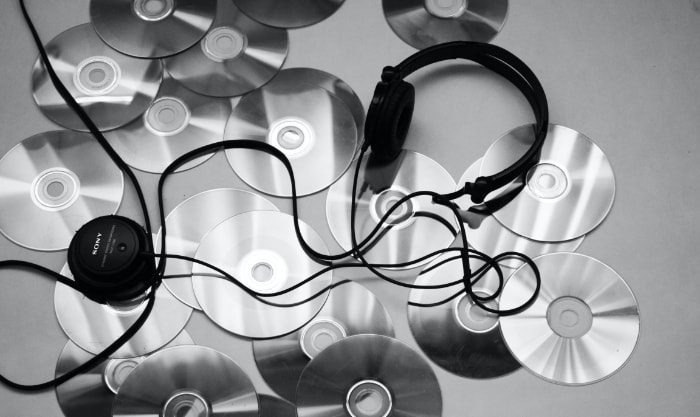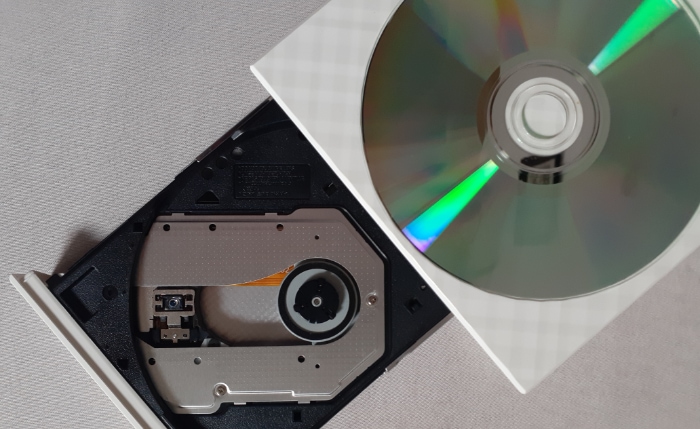What Are MP3 CDs? Compact, Versatile, and Economical

Music has long been an integral part of human civilization, with its storage and transmission evolving dramatically over time. From the vinyl records of the mid-20th century, cassettes in the 70s and 80s, to the compact discs (CDs) in the 90s, and now, in the age of cloud-based music streaming, the technological transformation has been immense.
Amidst this constant evolution, MP3 CDs emerged as an influential and interesting milestone.
This format combined the convenience of CDs with the compression capabilities of MP3s, bridging a gap between physical and digital music storage. Are you curious to learn more about MP3 CDs, how they differ from traditional CDs, and why they might still hold relevance in an increasingly digital world? This blog post is designed to explore these questions and illuminate the intriguing world of MP3 CDs.
What Are MP3 CDs?
Before exploring the specificities of MP3 CDs, it is essential to understand the two elements that compose them: the MP3 file format and CDs.
Understanding the MP3 File Format
MP3, an acronym for MPEG-1 Audio Layer III, is a digital audio encoding format. It's known for its efficient data compression technology, which reduces the size of music files without significantly affecting their sound quality.
The Magic of Compression
Compression technology is the secret behind MP3's popularity. It enables the encoding of sound data with the least amount of bits, reducing the file size while retaining most of the audio quality.
Essentially, MP3 compression works by removing the audio details that are beyond human hearing capabilities, which means that although data is lost (making it a “lossy” format), the changes are often not noticeable to the listener.
MP3 Versus Other Audio Formats
Compared to other audio formats like WAV or FLAC, MP3 files take up significantly less storage space. For example, a song stored in WAV format might take up 40-50 megabytes, while the same song converted into an MP3 file could take up just 3-4 megabytes, depending on the selected bitrate.
This size reduction made MP3 a preferred format during the early days of digital music, when storage space was often at a premium.
Diving into MP3 CDs
MP3 CDs are Compact Discs that contain music stored in MP3 format. They're different from conventional audio CDs (often referred to as CD-DA for Digital Audio) in terms of both capacity and functionality.
Differences Between MP3 CDs and Traditional CDs
Traditional audio CDs use uncompressed audio, typically in the WAV format. This leads to excellent sound quality but at the cost of storage space – a standard audio CD can hold up to 80 minutes of music, typically around 20 songs.
On the other hand, an MP3 CD, because it utilizes the MP3 format's compression, can hold a much larger number of songs – potentially hundreds, depending on the bitrate used.
Capacity and Functionality
The quantity of music that an MP3 CD can hold is one of its most appealing attributes. Given the same physical size as a traditional CD, an MP3 CD can store over 10 hours of music at a decent quality bitrate.
This increased capacity does not degrade the disc's durability or change its physical handling. However, it's important to note that not all CD players can read MP3 CDs – the device needs to be MP3-compatible, as the decoding process is different from that of traditional CDs.
How Are MP3 CDs Made?
The process of making MP3 CDs is straightforward and accessible to anyone with a computer and the right software. In essence, it involves converting your music files into MP3 format (if they aren't already), then burning these onto a blank CD.
Creating Your MP3 CD: A Step-by-Step Guide
The first step in creating an MP3 CD is to collect and organize the music files you want to burn onto the disc. These can be files you have downloaded or ripped from other CDs. If your files are not in MP3 format, you'll need to convert them using a program like iTunes, Windows Media Player, or a standalone file converter.
The Burning Process
After you have your MP3 files ready, you will need to use a CD burning software to write them onto a blank CD. Most operating systems come with built-in software for this – Windows, for example, has Windows Media Player, while macOS has iTunes.
Simply open the software, select the ‘Burn' option, then drag and drop your MP3 files into the burn list. After this, insert your blank CD into your computer's CD/DVD drive, then follow the software's prompts to start the burning process.
Requirements and Considerations When Making MP3 CDs
To create an MP3 CD, you'll need a few hardware components. First, you need a computer and an external CD/DVD writer drive. While these drives used to be built into computers, they're less common in newer models due to advancements in digital storage technologies.
Therefore, an external drive, which can be connected via USB, may be necessary. You will also need a blank CD-R or CD-RW disc on which to burn your MP3 files.
Software Considerations
As for software, you will need a media player or a dedicated disc burning software that supports MP3 CD creation. Many computers come with suitable software pre-installed.
However, there are also many third-party options available for download, some of which offer additional features.
Format Compatibility
One final thing to consider is the compatibility of your MP3 CD. As mentioned earlier, not all CD players can read MP3 CDs, so you should ensure that the device you intend to play your CD on supports this format.
Why Choose MP3 CDs?

In an era dominated by digital music streaming platforms, one might wonder why anyone would still opt for MP3 CDs. However, they offer several advantages that make them an attractive option for various uses.
Space and Cost Advantages
The primary advantage of MP3 CDs lies in their immense storage capacity compared to traditional CDs. As previously mentioned, an MP3 CD can hold hundreds of songs, making it an efficient way to carry large music libraries or audio files.
This is especially handy for long journeys, eliminating the need to change CDs frequently or limiting music selection due to space constraints.
Cost-Effectiveness
From a cost perspective, burning music onto MP3 CDs can be more economical than purchasing individual CDs, especially for extensive music collections. A pack of blank CDs is relatively inexpensive, and the cost of electricity used in burning a CD is minimal.
This makes MP3 CDs an affordable solution for physical music storage.
Versatility and Compatibility
MP3 CDs can be played on various devices, including CD players, DVD players, computers, and some car stereos. This versatility extends their usefulness, providing a physical backup of music that can be played on different platforms.
Preserving Older Audio Collections
For those with vast collections of older audio CDs, converting these to MP3 CDs can be a practical way to preserve and compactly store their music. This can protect beloved collections from damage while ensuring their accessibility for future enjoyment.
Drawbacks of MP3 CDs
While there are clear benefits, it's important to acknowledge some limitations of MP3 CDs.
Sound Quality
As a “lossy” compression format, MP3 does sacrifice some sound quality for smaller file sizes. For casual listeners, this difference may not be noticeable.
However, for audiophiles who value high-fidelity sound, this could be a drawback.
Compatibility Issues
Although MP3 CDs can be played on a variety of devices, they are not universally compatible with all CD players, especially older models. It's crucial to verify that the intended CD player can support the MP3 format before creating an MP3 CD.
The Future of MP3 CDs
As we continue to embrace the digital age with new formats and platforms for music consumption, one might wonder what place MP3 CDs have in our future. Are they destined to become obsolete, or could they carve out a unique niche in our increasingly digital world?
The Current State of Digital Music
Music streaming services have revolutionized how we access and consume music. Platforms like Spotify, Apple Music, and Amazon Music offer vast libraries of songs available at the click of a button.
This convenience, coupled with features like curated playlists and personalized recommendations, has led many consumers to favor these platforms over traditional physical media.
The Rise of High-Resolution Audio Formats
Simultaneously, there's been a growing interest in high-resolution audio formats among audiophiles and music purists. Formats like FLAC and ALAC offer “lossless” audio, which retains every bit of the original audio file.
This trend might seem to further push MP3 (and by extension, MP3 CDs) towards obsolescence.
Predictions for the Future of MP3 CDs
While the above trends might suggest a grim future for MP3 CDs, there are reasons to believe they could maintain a niche presence. For instance, they remain useful in contexts where internet access is unreliable or unavailable, such as remote areas or during certain outdoor activities.
They also serve as an inexpensive and tangible way to store or gift music, appealing to those who prefer physical media.
The Retro Appeal
Another factor to consider is the retro appeal of older media formats. Just as vinyl records have experienced a resurgence in popularity, MP3 CDs may too enjoy a nostalgic revival.
They offer a tangible connection to the music that some listeners prefer, compared to the intangibility of digital streaming services.
Conclusion
Our exploration of MP3 CDs has taken us through a journey of technological evolution, from understanding their construction and benefits to contemplating their future in a digital age.
MP3 CDs, a product of the fusion between compact discs and MP3 technology, represent a significant milestone in our ongoing pursuit of efficient, high-capacity music storage. They highlight the ingenuity inherent in our approaches to overcoming limitations of storage space and cost while attempting to retain sound quality.
Today, even in the face of increasing digitalization and streaming culture, MP3 CDs retain a unique charm and practicality. Their continued relevance attests to the diversity of our music consumption preferences.
They offer an alternative for those who appreciate tangible media, require music access in areas with limited connectivity, or simply enjoy the retro appeal of physical formats.
As we look towards the future, the role of MP3 CDs may further evolve, shaped by technological advances and shifting consumer preferences. But one thing is for certain: they've etched their place in the annals of audio technology, serving as a poignant reminder of our creative adaptations to the challenges of storing and sharing the music that enriches our lives.


